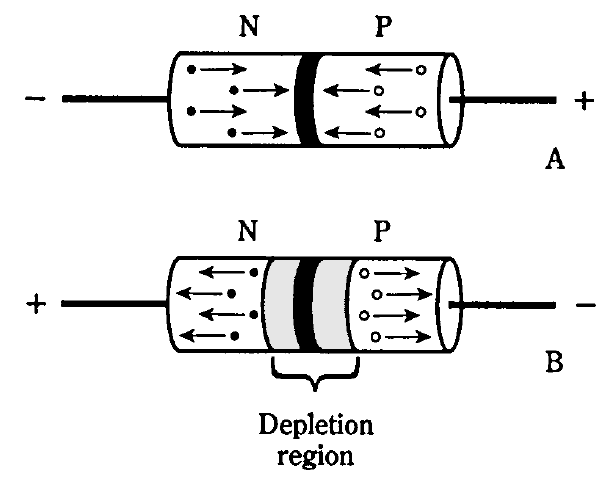


 الفيزياء الكلاسيكية
الفيزياء الكلاسيكية
 الكهربائية والمغناطيسية
الكهربائية والمغناطيسية
 علم البصريات
علم البصريات
 الفيزياء الحديثة
الفيزياء الحديثة
 النظرية النسبية
النظرية النسبية
 الفيزياء النووية
الفيزياء النووية
 فيزياء الحالة الصلبة
فيزياء الحالة الصلبة
 الليزر
الليزر
 علم الفلك
علم الفلك
 المجموعة الشمسية
المجموعة الشمسية
 الطاقة البديلة
الطاقة البديلة
 الفيزياء والعلوم الأخرى
الفيزياء والعلوم الأخرى
 مواضيع عامة في الفيزياء
مواضيع عامة في الفيزياء|
Read More
Date: 11-4-2021
Date: 5-4-2021
Date: 2-4-2021
|
Junction capacitance
Some P-N junctions can alternate between conduction (in forward bias) and nonconduction (in reverse bias) millions or billions of times per second. Other junctions are slower. The main limiting factor is the capacitance at the P-N junction during conditions of reverse bias. The amount of capacitance depends on several factors, including the operating voltage, the type of semiconductor material, and the cross-sectional area of the P-N junction.
By examining Fig. 1B, you should notice that the depletion region, sandwiched between two semiconducting sections, resembles the dielectric of a capacitor. In fact, the similarity is such that a reverse-biased P-N junction really is a capacitor. Some semiconductor components are made with this property specifically in mind.
The junction capacitance can be varied by changing the reverse-bias voltage, because this voltage affects the width of the depletion region. The greater the reverse voltage, the wider the depletion region gets, and the smaller the capacitance becomes.

Fig. 1: At A, forward bias of a P-N junction; at B, reverse bias. Electrons are shown as small dots, and holes are shown as open circles.



|
|
|
|
دخلت غرفة فنسيت ماذا تريد من داخلها.. خبير يفسر الحالة
|
|
|
|
|
|
|
ثورة طبية.. ابتكار أصغر جهاز لتنظيم ضربات القلب في العالم
|
|
|
|
|
|
|
قسم شؤون المعارف ووفد من جامعة البصرة يبحثان سبل تعزيز التعاون المشترك
|
|
|